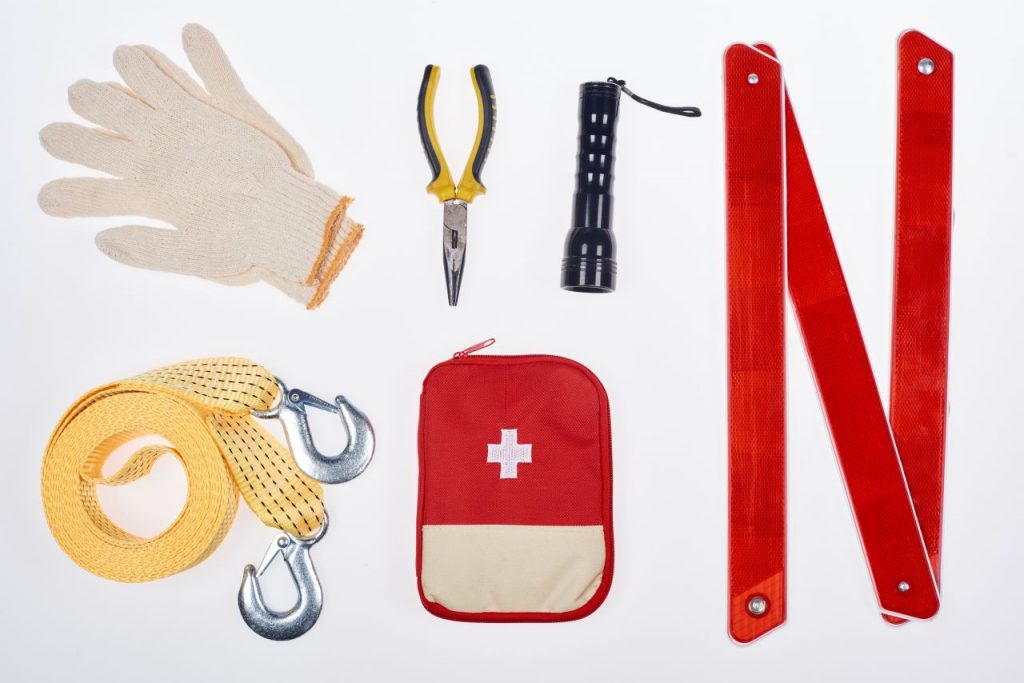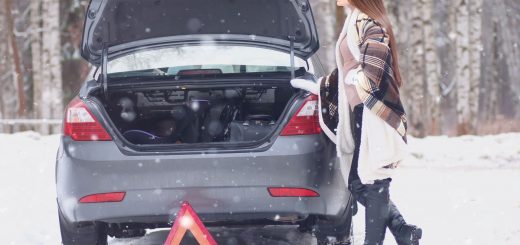As a driver, it is essential to be prepared for any situation that may arise while on the road. Having a well-stocked car can help you handle unexpected circumstances and stay safe while driving. Here are six essential things that every driver should have in their vehicle.
Obviously one needs not only to have these items, but accommodate themselves with them, learn how to use them properly and check from time to time if they are in good, working condition.
Spare tire and tools
Flat tires are a common occurrence when driving, and having a spare tire and the tools necessary to change it can save you a lot of time and hassle. Make sure to check the air pressure in your spare tire regularly and keep it properly inflated.
It is also a good idea to keep a small tire repair kit in your car in case of a puncture. But that kit will be of no use, unless you learn the proper technique of fixing punctures. Some kits contain glue and a piece of rubber to be put in the hole. But there are other solutions on the market, e.g. cans filled with sealant and pressurized gas. One connects the can to the tire air valve, fill it with the sealant and that should fix the air leak.

In case of the need to change the tire, it’s nice to wear gloves and reflective vest. Gloves keep your hands clean, and the reflective vest makes you visible for other drivers, which might save your life.
Emergency kit
An emergency kit should include items such as:
- flashlight (preferably with spare batteries),
- first-aid supplies,
- blankets (preferably not space blankets, i.e. mylar foil, but blankets made of cloth, wool for example)
- water.
These items can be vital in the event of a breakdown or other emergency situation. If you get stuck in the snow for a couple of hours, they will definitely be helpful. Also, please bear in mind that water might freeze, so either choose a container that will not get shattered in such a case, or use other means. One might fill a bottle to be less than half-full, which should keep it from being destroyed by the expanding, freezing water. The other approach is to buy emergency water packets, which are frost resistant, but much more expensive (about 1-2$ per 500 ml / 16 fl.oz.).
Consider adding additional items to your emergency kit, such as a reflective triangle, road flares or other emergency signaling light, to help make your car visible to other drivers if you break down at night or in poor visibility.
Some of the devices mentioned here are mandatory in some jurisdictions.
Phone charger
It is important to have a working phone in case of emergencies, but if your phone runs out of battery, it won’t do you much good. Keep a phone charger in your car so you can stay connected while on the go.
If you are planning a long road trip, consider bringing a portable power bank to keep your phone charged while driving. It might come in handy if the charger breaks or the fuse that secures the cigarette lighter socket get damaged.
Map or a GPS
Technology can be a great help when it comes to navigation, but it is always good to have a backup plan in case your phone dies, gets dropped in a murky puddle or you lose service. Keep a map or a separate portable GPS device in your car in case you need it.
It is also a good idea to familiarize yourself with the route you will be taking before setting out on a long trip, as this can help you find your way if you encounter any issues with your GPS. We highly recommend to download maps to your phone so that they are available offline. Most of the navigation apps have this feature available.
Jump cables
A dead battery can be a frustrating and inconvenient problem, but having a set of jump cables can help you get back on the road quickly. Keep a set in your car and learn how to use them in case you ever need to jump start your vehicle. It is also a good idea to keep a set of jumper cables in your trunk even if you have a newer vehicle, as newer cars can still have battery issues.
This will come in handy not only when your battery loses all the juice, but also when you want to help a stranded stranger on the side of the road.
One might also think about having a tow line, in case the jump cables are not enough to move a broken vehicle.
Rain gear
Inclement weather can strike at any time, and being caught without proper rain gear can be uncomfortable and dangerous. Keep a rain jacket or umbrella in your car so you can stay dry if the weather takes a turn for the worse.
Cheap ponchos made of foil are a good choice for the purpose. You could also step-up your gear and buy ponchos made from the mylar foil, which not only keep you dry, but also decrease the amount of heat lost by your body. They will be really handy in the winter or late fall, when the weather is wet and cold.
It is also a good idea to keep a set of wiper blades in good condition (or a spare set), as visibility can be greatly reduced in heavy rain or snow. Should we mention keeping some wiper fluid as well? 😉
Any additional ideas?
In addition to these six essential items, it is also a good idea to keep basic supplies such as bottled water (remember the freezing risk), snacks, and a small tool kit in your car. This tool kit should not only include a couple of wrenches and screwdrivers, but also spare bulbs, fuses, a bottle of engine oil, and maybe a spare v-belt, if your car uses one. In my life I changed one in my cars 5 or 6 times.
By being prepared for any situation, you can stay safe and comfortable on the road. It is also a good idea to periodically check your car’s fluid levels and tire pressure to ensure that your vehicle is running smoothly and safely. By taking the time to prepare for any eventuality, you can enjoy a more stress-free and enjoyable driving experience.

Recent Comments